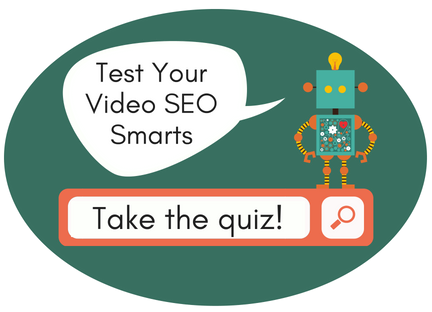What is Video SEO? How to Get Your Videos Seen
Updated: June 26, 2024
Would you believe that in the US, adults spend over 11 hours per day consuming media? You may or may not be surprised to learn that 6 of those hours are spent watching video. Our affinity for video is not going away, either. In 2017, online video accounted for 74% of all online traffic,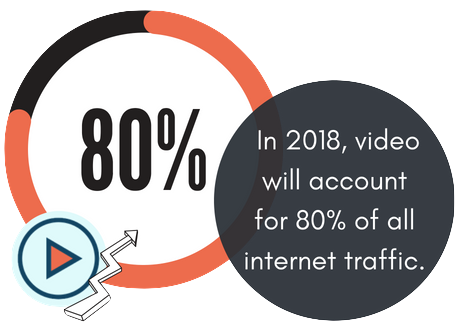
With demand for video on the upswing, it’s important that people are able to easily find your video content. That can be accomplished through video search engine optimization (SEO).
What Is Video SEO?
Now it’s time to answer the question, what is video SEO?
SEO “is the practice of increasing the quantity and quality of traffic to your website through organic search engine results.” To increase in ranking on a search engine, such as Google, it’s critical to optimize your content strategically. Certain factors like Facebook shares, content length, readability, and the quality of links to your site are just some of the things taken into consideration for search engine ranking. The goal is to ensure search engine bots can crawl your content, understand it, and index the data to match the appropriate search queries. Ideally, with a good SEO strategy, your content will rank high on a search engine, allowing people to find your website and increase your inbound traffic.
When it comes to the question, “What is video SEO?,” the same basic rules apply. Videos are a form of content, a popular one at that, and should be treated with the same attention as a product page or a blog post.
There’s a catch with video SEO, though: bots can’t watch video, they can only view text metadata like the title and tags. This must mean they can’t crawl, index, and rank video content. Right?
Well, no. While it is true that bots aren’t able to watch a video in the traditional sense, the good news is that there’s still a way to get your videos “seen” by search engines.
How to Make Your Video SEO Soar
You can boost your video SEO in no time by applying simple yet effective tactics to your video content.
Complement Video with Transcripts
Transcription is the process of converting the spoken content in video and audio files into text. Transcripts bring a textual element to videos, allowing bots to crawl the information and have a deeper understanding of what the video page is about.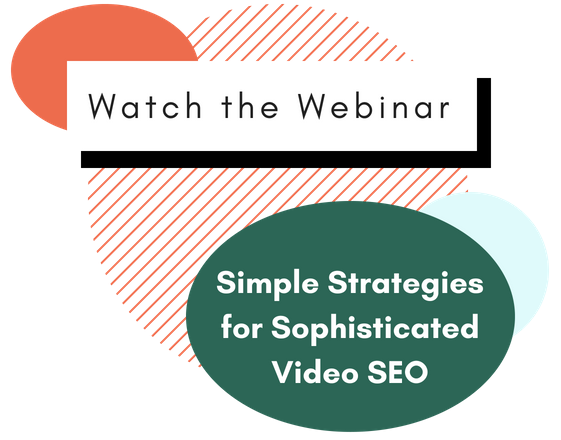
- Expose a number of new keywords
- Content is more flexible for users in sound sensitive environments
- Improves user’s ability to search topics within a video
- Use as a starting point for blogs, white papers, and other derivative content
- Easily draw translations from transcripts to reach a global audience
- Make content more accessible to d/Deaf or Hard of Hearing individuals
Add Closed Captions
Closed captioning is a process which involves transcribing audio to text and then synchronizing small phrases of text, known as “caption frames”, with the video. Captions reflect the audio track and are meant to be read while watching the video. Since captions come from a text file which the video references as it plays, the text is readable by bots and can be indexed for search results.
A study by Discovery Digital Networks shows that captioned videos get more views. Another study by Facebook, found that captions increase video views by 12% compared to uncaptioned videos.

Focus on User Experience
No matter what, when thinking about SEO and your video content, the focus should be on the user experience. Designing to optimize for search engines is important, but people should always be prioritized over bots. It’s likely that the elements search engines look for in digital content are only valued because they’ve learned that’s what users want to see.
Keep in mind that a website or single web page should display the following characteristics for optimal UX.
- Easy to use, navigate, and understand
- Professionally designed and accessible to modern browsers (i.e. mobile phones)
- High quality, legitimate, and credible content
A simple way to enhance the UX for your video is to include interactive transcripts on page. 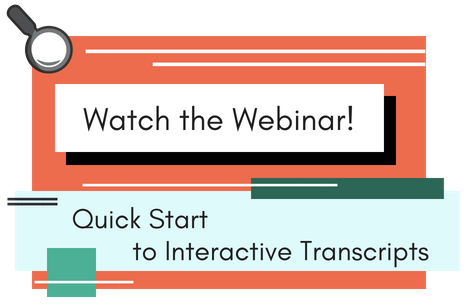
Utilize HTML Elements
Improving video SEO doesn’t have to be complicated. Optimizing the HTML elements on a video page is a quick way to improve your ranking. There are several standards which you should follow when designing a video web page.
- Each video should be hosted on its own separate webpage
- Arrange page so that the video is at the top
- Page title should describe what the page is about and relate directly to video
- Metadata and page description should be clear and concise
- URL should use descriptive keyword that relates to video
- Use only one H1 tag
- Use H2 tags to display pertinent information on the page
- Write alt-text for images, such as video thumbnails
- Limit elements in addition to video, such as images and text
Putting attention towards the metadata of your video is a small effort that won’t go unnoticed by search engines. Take the time to plan for your next video page, or quickly update older posts to increase your video SEO.
Utilize the SEO Embed Tool
SEO Embed is another way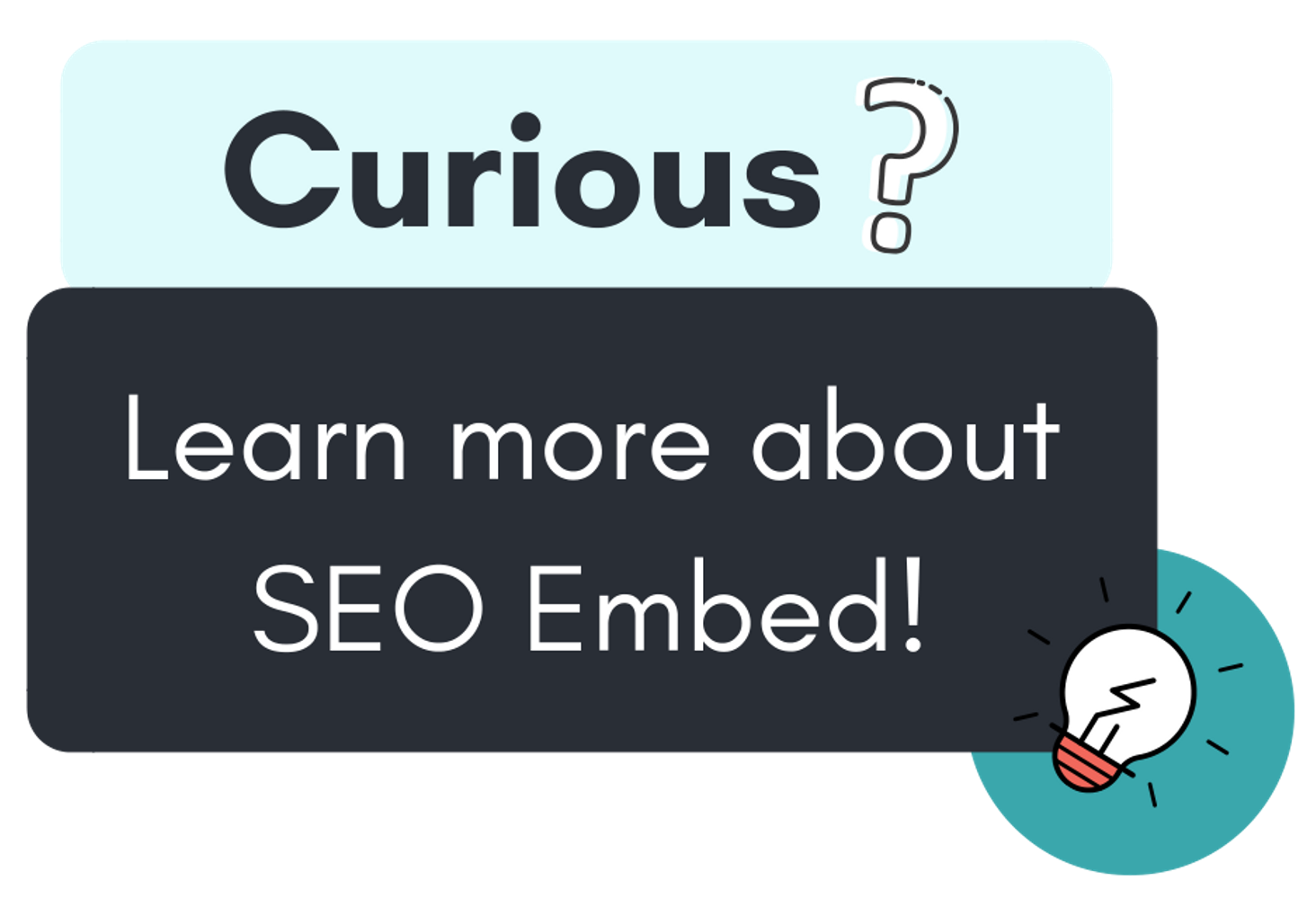
Best Practices for Video SEO
Long vs. Short Videos
Long videos can be informative, and when done well they keep viewers watching until the very end. Short videos are less of a time-commitment and the quick bursts of information and entertainment are memorable. Whether your strategy includes long or short videos, or a combination of both, it’s important to know that each requires slightly different SEO tactics, particularly in terms of how a video transcript is used. For our purposes, a long video is more than 5 minutes and a short video is anything less than that.
For a long video with a long-form transcript, it’s wise to avoid placing the text on the same page as the video. Instead, post the transcript on a completely separate web page and place a link to it directly below the video. There are several reasons why it’s a good idea to do this.
- Visitor should immediately feel like they are in a video environment
- A full, on-page transcript can slow the load time, affecting UX and SEO
- Google may classify video pages with long transcripts as text page
That last one is important. When search engine bots classify content as a video page, a rich snippet is displayed in the search engine. These rich snippets tend to yield a higher CTR, so they are much too valuable to jeopardize.
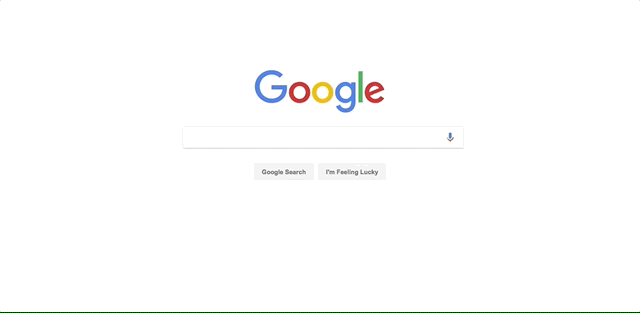
Note: For both long and short videos, it’s best to limit the amount of non-video content on the page, including text and images.
What Does It Take to Rank in YouTube?
When it comes to your videos ranking highly in YouTube, there are a few guidelines to follow that don’t necessarily apply to other search engines. Tim Schmoyer, a YouTube certified consultant, shares the secrets to driving organic traffic to YouTube videos.
People can find YouTube videos directly through the YouTube search bar, or other search engines like Yahoo! and Google. Videos aren’t the only thing that rank in YouTube, either. Channels and playlists can also be found in YouTube SERPs.
Both metadata and user engagement are the largest drivers of successful video SEO within YouTube. The metadata includes things like titles, tags, descriptions, and thumbnails. Metadata is largely where keyword research and optimization come into play, and is more influential in the early stages of indexing.
It’s the user experience that YouTube really cares about. The way videos are ranked depends on the way viewers interact and engage with the video. The ultimate question is: Does your video provide value to people?
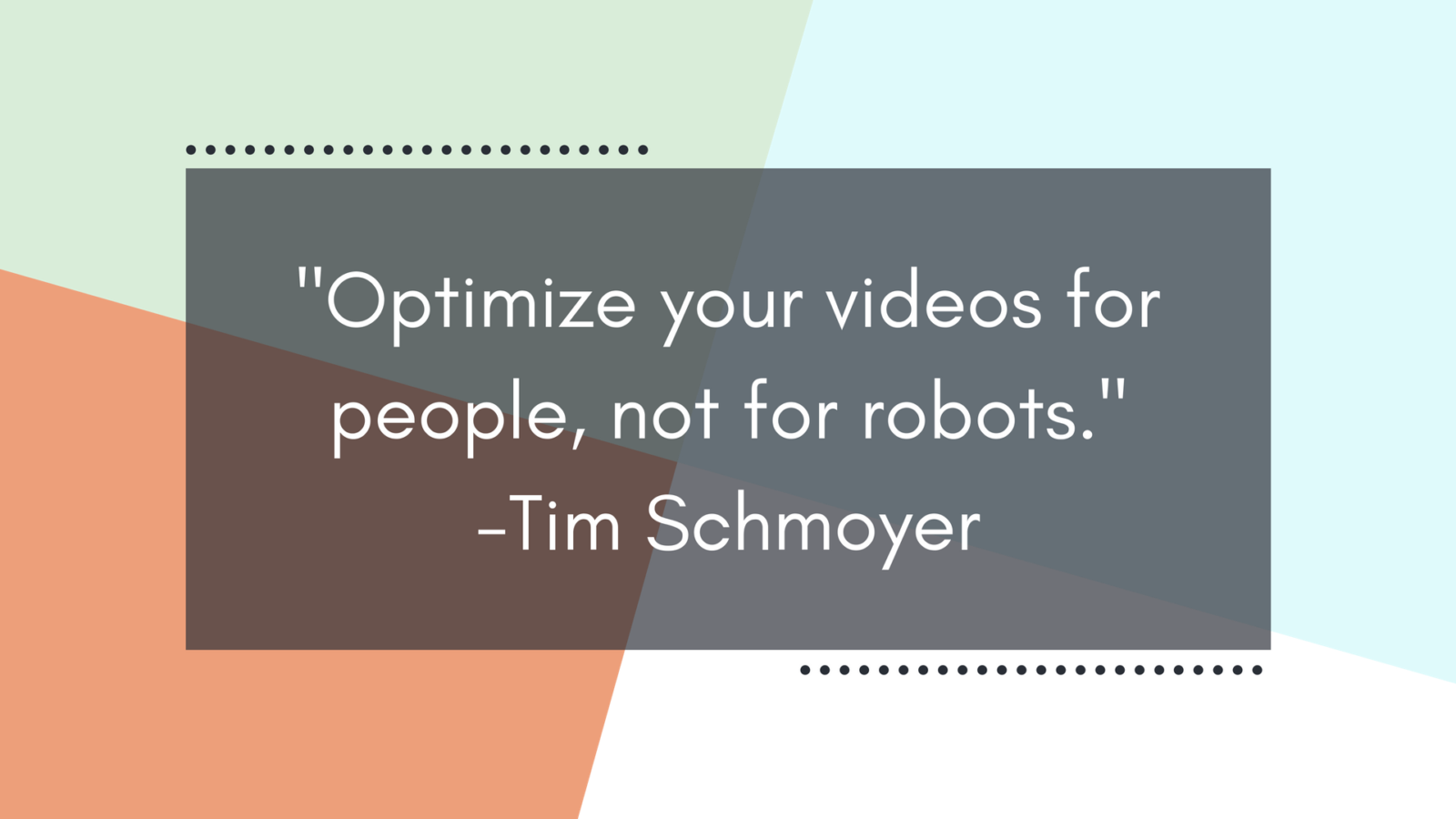
How Does YouTube Measure Engagement?
There are a couple of ways Youtube measures engagement. Watch time is the total amount of time spent watching a video. To increase watch time, make sure you build content that hooks the viewer within the first few seconds. Session watch time measures how a video contributes to an overall viewing session, like if your video prompts someone to exit YouTube or to go on to watch three more related videos. Creating playlists on your Youtube channel is a great way to encourage viewers to continue their session beyond one video.
When it comes to Youtube video SEO, it’s clear that high quality content that’s engaging and informative is key.




